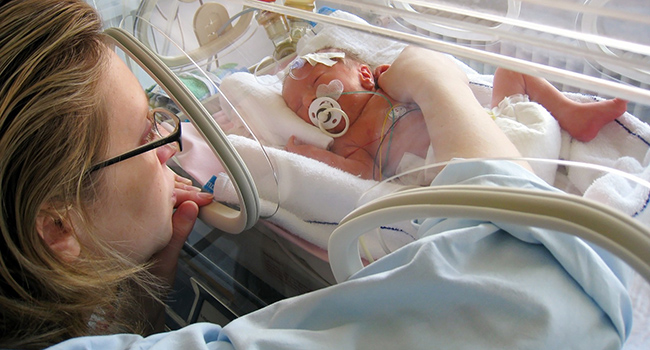“When it comes to perinatal health, postal code can be as important as your genetic code,” said perinatal epidemiologist Maria-Beatriz Ospina, assistant professor of obstetrics and gynecology and medicine, and Canada Research Chair in Life Course, Social Environments and Health.
“This study shows that your area of residence is a big predictor of many adverse birth outcomes in the province.”
The researchers used health data for Alberta mothers and babies born between 2006 and 2012 and cross-referenced it with a socio-economic status index of the province by postal code. They looked for patterns of preterm births and both small- and large-for-gestational-age births among different socioeconomic groups in rural and urban areas across Alberta.
They also tracked risk factors in the mothers that are linked to these problems for their newborns, including smoking, substance abuse, pre-pregnancy overweight, gestational diabetes and gestational hypertension.
The largest health inequalities were observed for smoking and substance abuse by mothers in lower socioeconomic groups in rural Alberta, and the other adverse birth outcomes and related maternal risk factors were overrepresented in lower socioeconomic status groups in both rural and urban areas.
“We have a publicly funded health-care system that in theory should provide equitable access to perinatal care,” she said. “You would expect that health gaps would be minimal because we have the same opportunities on paper, but it doesn’t seem to be the case when we look at these indicators.”
Ospina said the results reinforce previous evidence that women in rural areas are more vulnerable to social and material deprivation than those in urban settings – including a study last year that showed pregnant teens have poorer outcomes in rural areas.
This may be because their access to perinatal and other health-care resources is limited, she said.
“I’ve heard stories in the course of my work that would break your heart of pregnant women driving for four hours in the middle of the night to go to urban hospitals to deliver their babies,” she said.
Ospina said the higher rate of maternal risk factors is likely linked to stress from material deprivation and, for Indigenous women, structural factors such as racism and discrimination.
“Those things get under your skin and translate into health behaviours and health outcomes,” Ospina said. “Some health behaviours are not individual choices; so smoking is not an individual decision, it’s a response to structural pressures.”
“These are things to consider when you formulate policies and think about how to make changes to improve the health of pregnant women,” she said.
Ospina intends to do further research on how social determinants and other exposures influence health in pregnancy, early childhood and later in life.
“We don’t have long enough cohorts to study yet to see those effects on adult health clearly, but there is evidence that diseases which manifest later in life, such as chronic obstructive pulmonary disease (COPD), have their early origins in the perinatal phase,” she said.
“Babies are starting on the right or the wrong foot,” she said, “depending on how well their mothers were doing even before they are conceived.
“And the social and economic adversity of the mother keeps up as the children grow,” she pointed out. “It’s kind of a ghost that is there, permeating the development of the child throughout their life.”
The study was led by Ospina and Jesus Serrano-Lomelin, a post-doctoral fellow at Ospina’s lab. It was part of the interdisciplinary DoMiNO (Data Mining and Neonatal Outcomes) project led by U of A computing science professor Osmar Zaiane and pediatrics professor Alvaro Osornio-Vargas.
| By Gillian Rutherford
This article was submitted by the University of Alberta’s online publication Folio, a Troy Media content provider partner.
The views, opinions and positions expressed by columnists and contributors are the author’s alone. They do not inherently or expressly reflect the views, opinions and/or positions of our publication.


